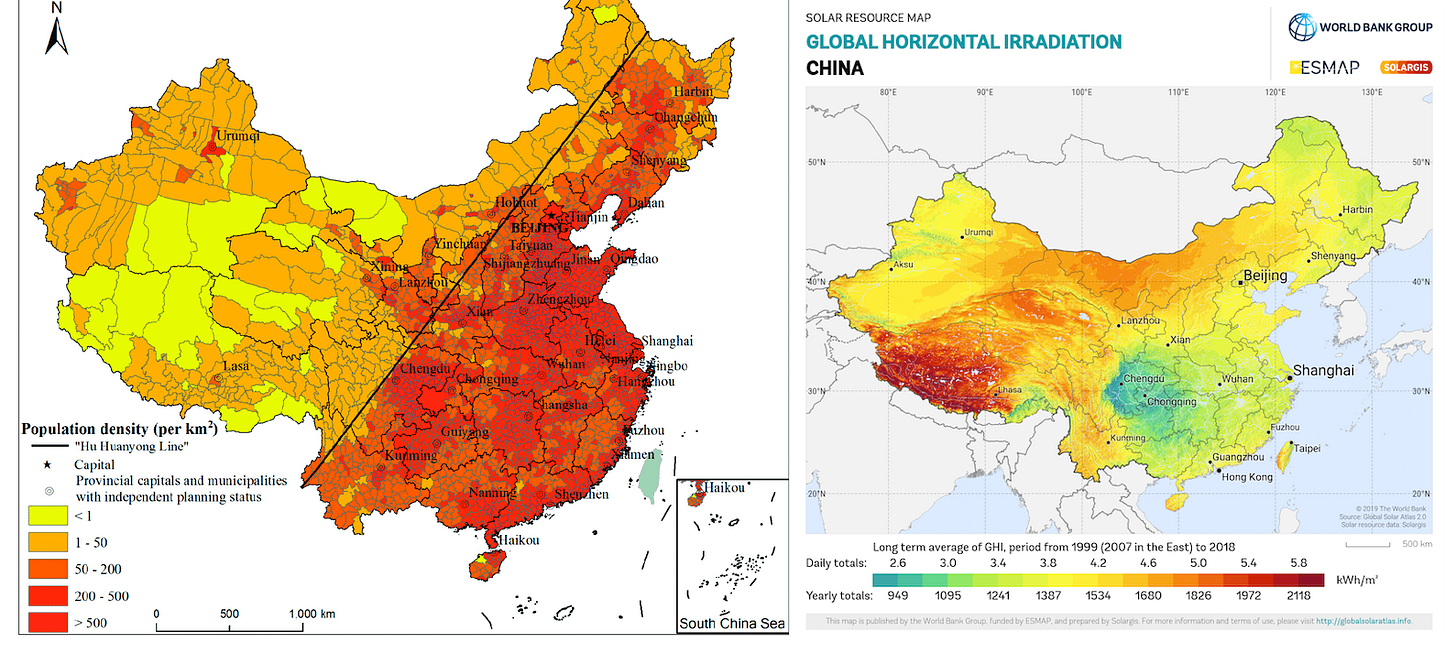Cultural Connection: After days of brainstorming the best way to lead into this piece, I had to stick with “Here Comes the Sun” by The Beatles. It’s a simple, upbeat song that accompanies the general positive news and enthusiasm around the U.S. solar industry.
Background: In the United States, solar installations are poised for "staggering" growth in coming years, buoyed by government programs such as the Inflation Reduction Act and low material costs. This news reflects a growing global push for more renewable energy generation.
Yes, but lurking behind these compelling statistics lies the fact that siting renewable energy power plants and connecting them to the grid results in a unique set of challenges.
In addition to grid interconnection issues and grid frequency concerns lies the fact that the sun carries more energy when it hits areas closer to the equator. Many of the best locations for harnessing solar power are in sunny, arid deserts, which are far from the big population centers that can really use it.
To illustrate, take a look at the two maps below of the United States. The left map shows major U.S. population centers. The right map indicates the areas that receive the highest levels of solar irradiance, a key figure that indicates how powerful the sun shines in a particular area and, as a result, how much electricity can be generated from that sunshine.

Solar power is a tremendous renewable energy asset that’s used nationwide, but utilities and homeowners alike will get more pop from their panels when they’re living in the dark red areas throughout the Southwest.
For all of its differences, China has a similar geographic challenge when it comes to solar irradiance.
The left map below shows the general population density of China. The diagonal line in the middle of the country separates the densely packed east from the relatively unpopulated west. Around 90% of China’s population lives to the east of that dividing line.
In a strikingly similar situation to the U.S., the best areas for capturing solar energy are located in China’s southwest around the Tibetan plateau as well as in the north around the Gobi desert.

As the maps indicate, in both China and the U.S. people tend to live along the coastlines or in large interior cities, while the choicest locations for building utility-scale solar farms are generally in sparsely populated, high altitude, dry, and sunny locations.
As you might imagine, China and the U.S. have taken unique approaches to this issue.
In China, utility authorities have built numerous, high-profile solar farm projects on the fringes of the desert. To deliver that electricity to power hungry cities, they’ve constructed thousands of miles of ultra-high voltage direct current (UHVDC) lines, which are optimized for the long-distance transmission of electricity.
Through their construction of these lines, they’ve become global leaders in the construction and deployment of UHVDC lines, although they face significant challenges with provinces and cities who’d prefer not to have power lines stretching through their backyards.
In the United States, California (1), Nevada (5), and Arizona (7) are in the top 10 of U.S. states with overall solar installations, although there is a lot more solar potential that can be tapped. Despite this potential, there’s a clear need for additional distribution lines - especially to connect the country’s disparate grid systems.
In fact, the demand for additional renewable electricity in that region is so great that Mexican leaders have envisioned a plan where they export solar-generated electricity to California and Arizona.
Talking Point 1: The United States and China were used as examples, but the challenge of tapping into distant renewable energy resources and moving them to population centers exists around the globe. The potential is there, but finding the most cost-effective ways to deliver it to homes, businesses, and industry is the challenge.
Talking Point 2: There’s more to bringing a new solar plant online than just building it and connecting it to the grid. The sheer scale and growth of the renewable industry worldwide is incredible, but, as with any disruptive technology, it introduces new challenges for consumers, industry, and policymakers alike. Solving permitting, energy storage, and grid frequency issues should rank highly for any renewable advocate looking to see more green energy on the grid.
*China Solar Irradiance Map obtained from the “Global Solar Atlas 2.0, a free, web-based application developed and operated by the company Solargis s.r.o. on behalf of the World Bank Group, utilizing Solargis data, with funding provided by the Energy Sector Management Assistance Program (ESMAP). For additional information: https://globalsolaratlas.info



